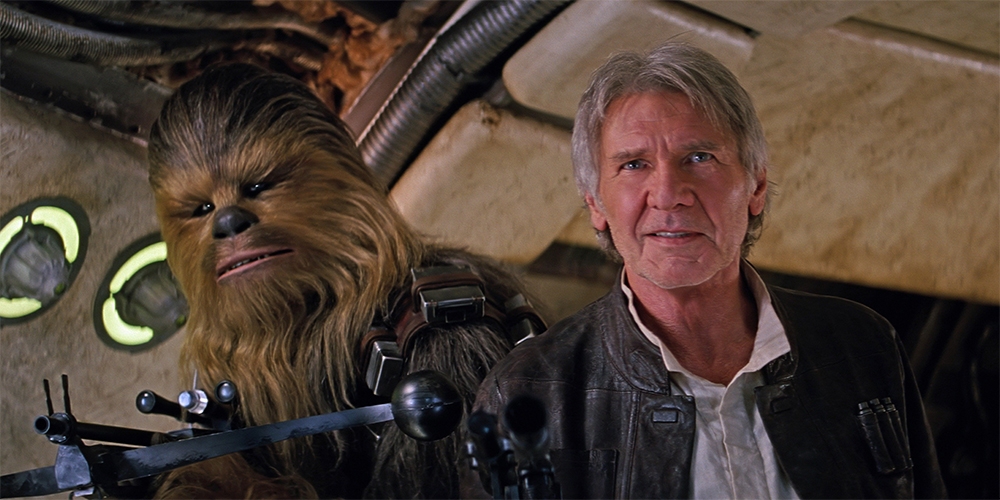Star Wars Episode VII: The Force Awakens
Directed by J.J. Abrams
Written by Lawrence Kasdan, J.J. Abrams, and Michael Arndt
Produced by Lucasfilm, Bad Robot, and Truenorth Productions
I have to be careful, here. The Force Awakens has been on screens for a few days now, and spoilers abound on the Internet. Those who want to go into the movie fresh are staying far away from reviews such as this one. Every Star Wars fan should see it unburdened by advance knowledge. They should see it and have their expectations met by the movie’s own merits apart from the hype. Director J.J. Abrams and new owner Disney have taken great pains to keep us in the dark on Episode VII plot points. We should be in the dark when the movie dawns on us.
Episode VII is a good film, and an important film, and the film Star Wars fans want and need and have been waiting for since Episode VI: Return of the Jedi in 1983. That’s accounting for the prequels, which aren’t as bad as modern legend tries to convince, but fail to invoke the fierce nostalgic pang that fuels Abrams’ movie. George Lucas’s constant reinventions of his original and unparalleled space opera have earned him derision from the fans, who feel cheated when Star Wars doesn’t go the way they remember it. Abrams is clearly a fan, and he treats his opportunity and material with a great deal of reverence, and it shows.
Memory is a powerful thing. It’s pretty well common knowledge by now that old favourites return in Episode VII. There are characters we haven’t seen in years, and when they appear onscreen, there is a wonderful exaltation. A prop, a sound effect, a recalled line of dialogue transports us back to our childhoods, watching the entire universe face its potential end at the hands of darkness through the jagged tracking lines on VHS tapes played countless times. It is that old darkness we meet again in Episode VII, that old light, that feeling that old heroes have returned to face a new evil and make things right again.
I am in a complicated position. Suffice it to say that the Western is built on the kind of scene that closes Episode VII. Everything that needs saying is done so in a look. We know the circumstances. We know the stakes. We’ve seen these characters rise, and fall, and rise again, in movie after movie, and their losses and gains are ours. There is poetry here and elsewhere in The Force Awakens, moments that are quiet and restrained, moments that are bombastic and thrilling, with John Williams’ familiar score bridging us backward into memory and forward into the realm of infinite possibility.
What Episode VII has that the prequels don’t is a sense of promise. That promise has nothing to do with digital advancements or more convincing special effects. Episode VII was shot on 35mm film, in old-fashioned 2-D (its 3-D is a better-than-average post-conversion), befitting a long-ago galaxy from far, far away. No, the promise of Episode VII is a refurbished commitment of Star Wars to new worlds, new battles, and new adventures, all rooted in what made fans of the series latch on like mynocks in the first place. More so than any Star Wars film yet made, it’s a commitment to the future of science fiction storytelling, led by those characters who started us on this formative journey. We welcome our heroes back with pleading eyes, and hope they will always fight for us.

